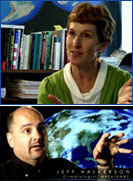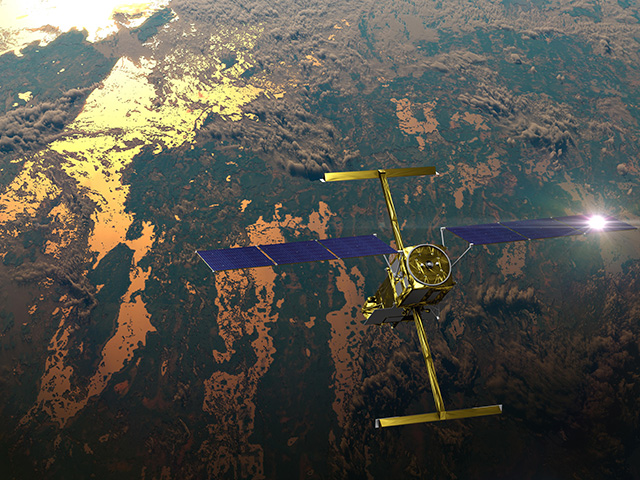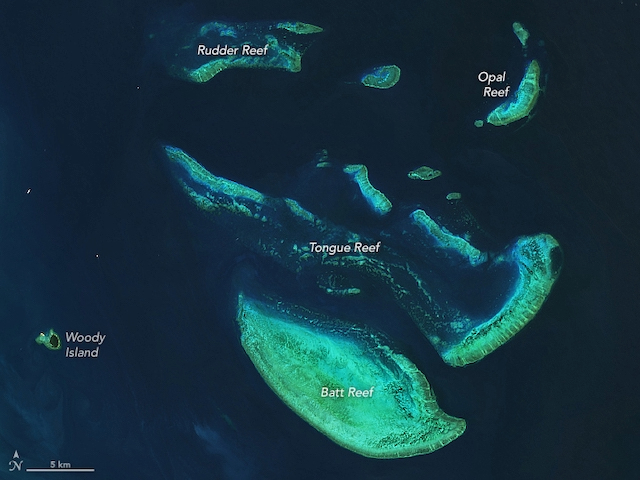Dr. William Lau: The Interconnections of Earth Systems
 |
Dr. William Lau, Deputy Director for Atmospheres, Earth Sciences Division at NASA's Goddard Space Flight Center discusses findings from his recent research into teleconnections between the large fires in Russia during the Summer of 2010 and the large flooding events in Pakistan at around the same time. Dr. Lau's research illustrates the close interconnection between the various Earth systems and how changes in one system or region can lead to significant changes in other systems or regions, even when separated in space and time. Another example is the potential linkage between the current historic drought in Texas and sea surface temperature trends in the Eastern Pacific, also called 'La Nina'.
Watch video: 640 x 480 1280 x 720 |
|
|
Dr. Gavin Schmidt: The Role of Modeling in Studying Changes across Our Planet
 |
Dr. Gavin Schmidt, Research Physical Scientist at the Goddard Institute for Space Studies (GISS), talks about the role of modeling at NASA. Driven by satellite data collected across the various Earth systems (air, water, land, ice), these powerful computer models allow scientists such as Gavin to study changes across our planet, to better understand the consequences of such changes on the Earth and its inhabitants, but also to look at potential changes in the future.
Watch video: 640 x 480 1280 x 720 |
|
|
NASA EDGE Interview with DISCOVER-AQ Scientists
 |
You don't need a time traveling DeLorean to get a clear picture of air quality near the Earth's surface, In fact, your best bet is to take the DISCOVER-AQ approach. They use Sun photometers, LIDAR, tethered and untethered ozone sondes ... and almost a DeLorean. NASA EDGE breathes easier after talking to Jim Crawford (DISCOVER-AQ, Principle Investigator) and Brent Holbren (Co-Investigator), as well as Cassie Stearns and David Doughty at the Beltville, Md., ground station.
Go to video > |
|
|
Climate Change: Fact And Fiction - TEDxNASA presentation by Bruce Wielicki
 |
Clouds affect the energy Earth receives, keeps and emits back to space -- it's all a matter of balance. Dr. Bruce Wielicki is senior scientist for Earth science at NASA's Langley Research Center. His research has focused on clouds and their role in Earth's radiative energy balance for more than 25 years. He served as principal investigator on NASA's CERES science team and as co-investigator on the CALIPSO missions. NASA is now gearing up for a mission to compile the most accurate climate data ever. Dr. Wielicki is Mission Scientist for CLARREO, which will provide accurate, credible and tested climate records that lay the groundwork for decisions on policies that address the effects of climate change on society.
Go to video > |
|
|
Salt of the Earth
 |
Salinity plays a major role in how ocean waters circulate around the globe. Salinity changes can create ocean circulation changes that, in turn, may impact regional and global climates. The extent to which salinity impacts our global ocean circulation is still relatively unknown, but NASA's new Aquarius mission – launched June 2011 - will help advance that understanding by painting a global picture of our planet's salty waters.
This video features oceanographer Susan Lozier from Duke University and climatologist Jeff Halvorson from UMBC.
Go to video > |
|
|
Tom Wagner – 2011 Sea Ice Minimum
|
|
NASA 360 Degrees: Interviews with Josh Willis and Bill Patzert on Sea Level Rise
 |
Interviews with Josh Willis at the beach and Bill Patzert at JPL, who talk about the TOPEX/Poseidon, Jason-1 and Jason-2 satellites, which monitor sea level and climate change.
Go to video > |
|





















